Book Review: The LEGO Trains Book
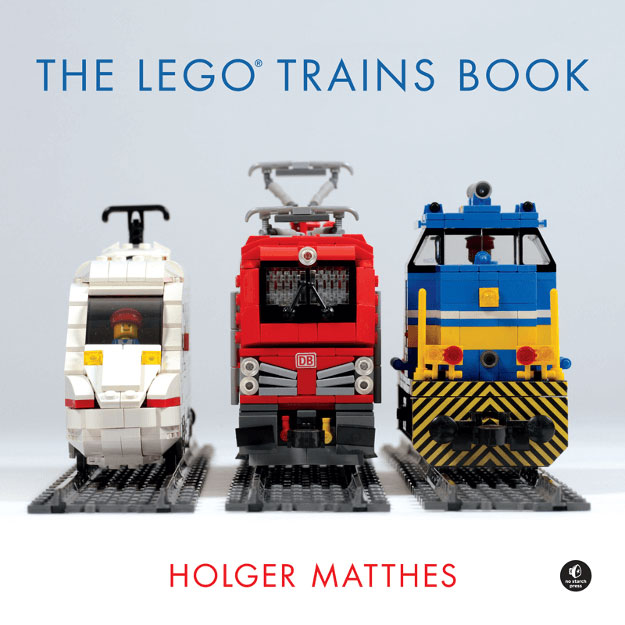
Summer is over and traditionally autumn doesn’t only bring the falling of the leaves, but also new LEGO titles in the No Starch press catalogue. This years the season starts off with “The LEGO Trains Book by Holger Matheson.
I have to admit I know very little about LEGO trains. I remember having blue rails and a black steam engine with a huge battery box on a tender (one that took three C batteries) and getting some grey tracks and switches later on. I still have one of those 4.5V train motors in a bin of old parts somewhere. The world was a different place back then and while I did see some pictures of large train layouts, I knew in my heart that was well out of my reach and decided to concentrate on other things. Years later, when I came out of my dark ages, I started to look back (and around) and learned a little more about the LEGO Trains world, but—again for practical reasons—I decided to concentrate on other things.
Still, LEGO Trains are a fascinating subject and Holger Matthes an authority on the subject. He originally wrote his book in German (LEGO® Eisenbahn—Konzepte und Techniken für realistische Modelle) and it is great to see that no starch press have picked it up for publication in English, giving it a much broader audience.
A History of LEGO Trains
The LEGO Trains book starts out with “A History of LEGO Trains” that has taken me on a sentimental journey through the different system. Each era is covered in depth, but easy and entertaining to read through. For every system there is a description about how it was powered, tracks and their geometry, train specific elements, and the system seen in today’s perspective. All of this is accompanied by excellent pictures that illustrate many of the points made.
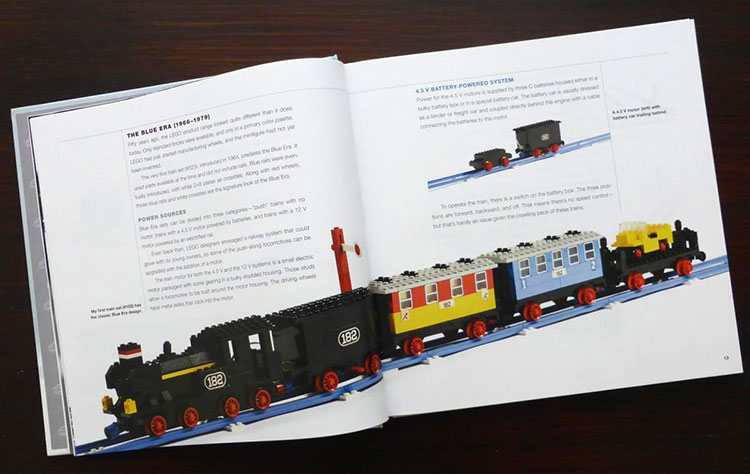
Basic Principles
The next section of the book is all about the elements that make up a LEGO trains and the techniques used to put them together. After providing a general overview of different types of elements and some of the most important names, we move on to connecting the parts together. The book covers a large number of SNOT techniques. It doesn’t limit itself to showing instructive pictures of exploded views, but also explains how (or why) these techniques work and in where they might be useful. While the examples in the book are of course specifically directed at train building, almost all of them can be used with equal success in any other (System) build.

Designing Your Own Models
After establishing the vocabulary and grammar of the subject, the book moves on to practical examples. What scale should you choose? How wide should you build? And how can you make user your train will roll smoothly on the tracks you use? This section also covers elements made by third party vendors like Big Ben Bricks or Trained Bricks, who offer wheel sizes that are not available in the official LEGO catalogue, or ME Models and BrickTracks and 4D Brix, who offer tacks with different geometries to the standard LEGO system.
I was especially interested to see a special mention of the Modular Integrated Landscaping System (MILS), particularly to the MILS track bed modules presented on l-gauge.org.
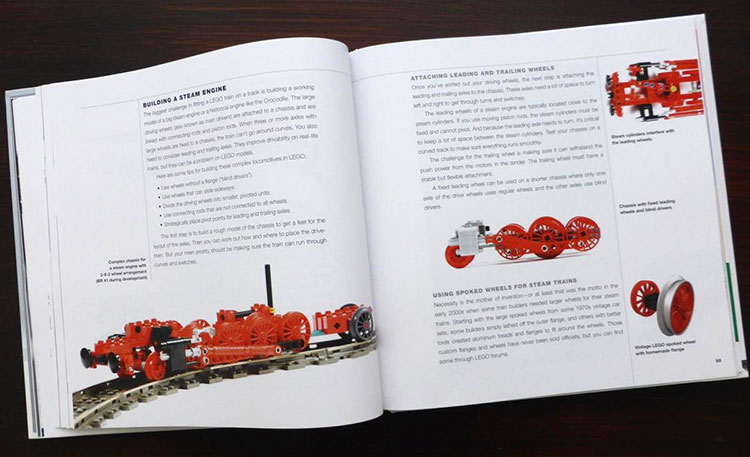
Case Studies
Grammar, vocabulary and a few example sentences don’t make a fluent speaker. Nor do a bunch of parts, some techniques and recommendations make a good train builder. That’s where the next section of the book comes in. This time we get a look at the design process of the author, with practical examples of problem solving and the use of some of the techniques described before. To me this is by far the most interesting and practical part of the book. Of course, it depends on the information described previously, but this is where you see in in action and begin to envision that you might also be able to build your very own LEGO Train. Again, the photography is excellent and an indispensable complement to the descriptions.
As a bonus, the complete building instructions for the BR10 Steam Engine that is shown in this chapter are available for download on the nostarch webpage for this title.
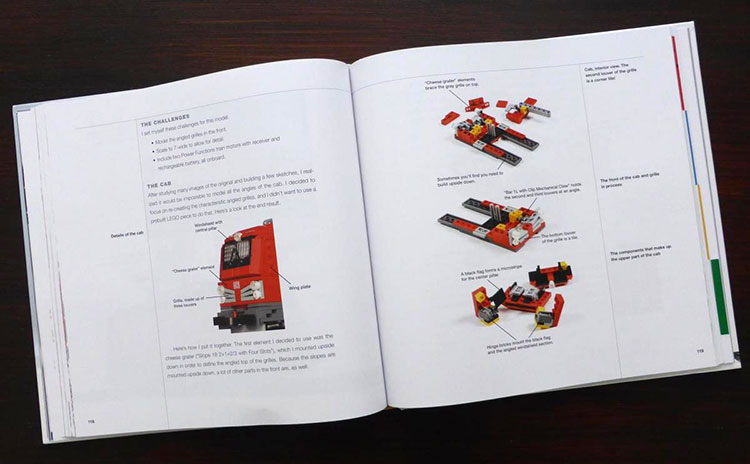
Building Instructions
Now that we have all the tools we need to build our very ow LEGO Train, it’s time to start building. Starting off with your very own design may be a bit daunting, and so the book also includes instructions for 4 models to help you gets started. There are instructions for the Inter-City Express featured on the front page (with three different windshield designs and instructions for motorising the engine), a simple gondola, the BE 6/8 ”Crocodile” and a vintage passenger car. Additionally, you can download instructions for a “simpler” BR80 Steam Engine on the nostarch webpage for the book.
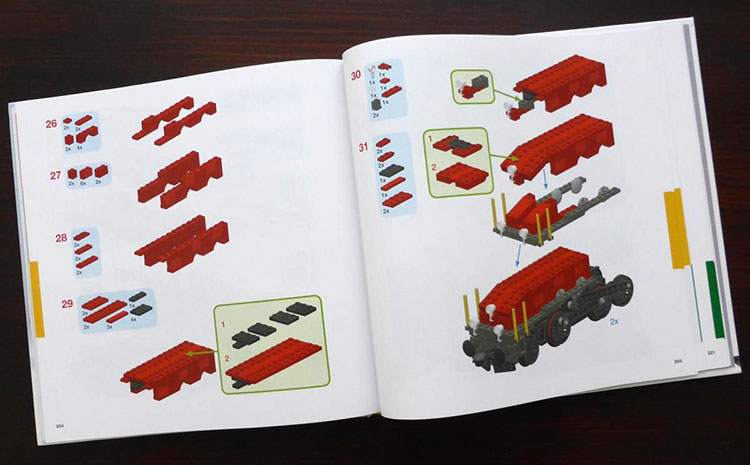
Impressions
As I mentioned at the outset of this review, I am not a LEGO Train builder. My primary interest and enjoyment in this book was to see the historical overview of LEGO Trains and to see some ingenious building techniques in action. That said, this book is the definitive LEGO Train guide for anyone who wants to build a LEGO train, whether you are a complete beginner or experienced builder. It contains everything you need to know and indications on where to find everything else.
The nostarch webpage for this book (https://www.nostarch.com/legotrains) contains a list of links for additional materials (referenced in the book), you can download for free. In total there are 6 models with building instructions from the author and a link to an additional 30 from the 10183 Hobby Train Set – plenty of materials to choose from to get you started, and go well beyond.
If you want to know more about the author, you can see more of his MOCs and tutorial on his website: http://holgermatthes.de/bricks/en/index.php
2321